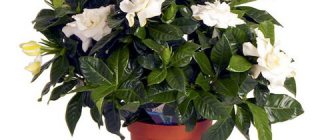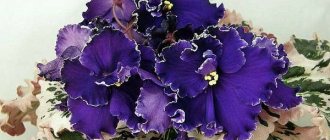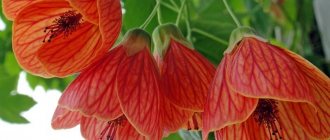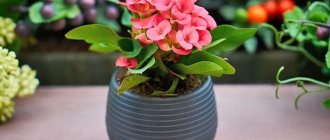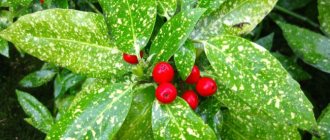Bulbous flowers are considered one of the most attractive representatives of the flora. This group of plants is suitable for cultivation in the garden and at home, and early forcing. Flower growers value them for their unpretentious nature, but some varieties require special care. Bulbous flowers, photos and names of which you will learn from the article, will delight you in early spring immediately after the snow melts, give you lush blooms in summer and complement the autumn picture with bright colors. Indoor plants most often bloom in winter, breaking up the cloudy snow-white landscape. The article will tell you about the most popular bulbous crops and the nuances of their cultivation.
Bulbous flowers - general characteristics of crops
Bulbous crops are usually called representatives of the Amaryllis, Liliaceae, Iris, Onion, Hyacinthaceae families, as well as their subfamilies. These plants are united by the presence of an underground storage organ - a bulb. If we cut the bulb, we will see that it is a modified shoot growing underground. The flat stem forms the bottom, and the fleshy modified leaves form the scales.
The outer scales perform a protective function, protecting the onion from damage and fungus. The dense, fleshy scales of the inner layer serve to store nutrients that are necessary for wintering. Renewal buds (aerial shoots) and daughter bulbs develop from the axils of the modified leaves. Thus, the bulb serves not only as a storage facility, but also as an organ for vegetative propagation.
Know! According to the nature of development, annual and perennial bulbs are distinguished. The former are completely replaced by a new storage organ every year by the end of the growing season, the latter are renewed every few years.
Corms are an overgrown underground part of the stem, and therefore do not have characteristic storage scales. The nodule is covered on top with a layer of dead leaves, which also performs a protective function. There are several growth points at the top; babies are formed near the base, on top or on the side. Such underground “storages” are typical for gladioli, crocus, freesia, and colchicum.
Flower growers do not draw a clear line when classifying corms and bulbous plants into the same category, because the technology of growing and caring for them is not much different. Botanists believe that corm species occupy an intermediate position between bulbous and rhizomatous representatives of the flora.
Plants with underground “storage” can bloom in early spring, summer, autumn and even winter (at home), the duration of budding varies from several days to a month. Low-growing representatives of the flora will perfectly decorate an alpine hill, rock garden, or a prefabricated multi-tiered flower bed. Tall plants will become the center of the lawn composition, forming a bright spot against the background of greenery and shrubs. They are also good as a spectacular background for any flower bed.
Advice! Since most crops are ephemeral, they are used in group plantings so that bushes with later budding periods cover dying vegetation.
Applications of perennials
Based on perennial flowers, you can create a variety of fairly static landscape objects on your site:
- Flower arrangements with a selection of plants that bloom buds at different times. They can have a monochrome palette with shades of one color from light to dark tones or be scattered with a multi-colored rainbow.
- Flower bedsconsisting not only of perennials. Annual flowers that bloom at a later date can harmoniously coexist with them.
- Hanging flower pots , intended to be used for decorating vertical structures. Multi-tiered flower beds made up of flowering plants of varying heights.
Garden bulbous perennials with different flowering periods
Garden representatives of various families that form the underground storage organ have many faces. The most common group are primroses, but there are species that bloom in summer and even autumn. Each flower differs from its counterparts in appearance and has some peculiarities of agricultural technology. Let's take a closer look at the species diversity of garden perennials.
Early spring bulbous flowers (primroses)
Primroses or ephemeroids are plants with a very short growing season. They bloom in early spring, pleasing the eye and attracting pollinators to the garden. After flowering, the leaves remain for some time, which help to store food reserves for wintering. When the leaves die, the vital functions inside the bulb do not stop. The underground organ is actively increasing its mass, laying flower stalks and forming children in order to once again please the gardener with bright colors next season.
The popularity of primroses is due to their unpretentious nature and winter hardiness. But certain species require special care and technology for storing bulbs. Among primroses, the following crops are especially popular:
- snowdrop (galanthus);
- anemone (anemone);
- crocus (saffron);
- Chionodoxa;
- scilla (scylla);
- iridodictum;
- muscari;
- Pushkinia
Galanthus is the earliest representative of primroses; its snow-white buds literally peek through from under the remnants of the snow cover. Snowdrop belongs to the Amaryllidaceae family, there are 18 species in the genus, about 250 hybrid forms have been bred.
Remember! This plant is strictly protected and is included in the Red Book. Spring bouquets are allowed to be sold only with a certificate of origin.
Perennial ephemeroid has a very short growing season. The bulb consists of three scales, the diameter of the head is 2-3 cm, the dormant period lasts 9 months. The bush forms 2-3 lanceolate leaves, appearing simultaneously with the buds. The surface of the plates is shiny or covered with a waxy coating. The flower is small, 1.5–3 cm long, and tolerates frost down to -10⁰C.
The corolla consists of two rows of petals - the three outer ones are snow-white, oval, and the three inner ones are wedge-shaped, with a green spot at the base. The aroma is attractive, but subtle. Inside the three-chambered box there are some seeds. The seed is equipped with an appendage and is carried by ants.
Galanthus easily propagates by seeds and children, and self-sows. The heads are planted in the fall in a well-lit, level place that prevents stagnation of water. Snowdrops are not afraid of temperature fluctuations and are frost-resistant. They need a loose nutritious substrate and require moisture in the spring. Potassium-phosphorus fertilizing is applied once before the leaf mass dies. Transplantation is carried out every 5-6 years.
Anemones - spring anemones are of botanical and hybrid origin. The simple structure of the corolla does not make the anemone less attractive. The fluffy center of the flower consists of many stamens and pistils. It is framed by simple oval petals, ranging from 5 to 20 or more pieces. The diameter of the corolla is 3-5 cm, in the crown anemone it is up to 8 cm. The flowers are simple or double, collected in a loose umbellate inflorescence. The height of the bushes is from 30-50 cm. The palette is very diverse.
Attention! Anemones are included in the ranunculaceae family; hand and eye protection is required when working. The juice causes serious burns and irritates mucous membranes.
Hybrid varieties have low winter hardiness and require reliable shelter. They grow well under the shade of trees and shrubs; they prefer a loose substrate rich in organic matter with a neutral environment. They do not tolerate excess moisture and are drought-resistant. Transplantation is carried out every 8-10 years, since the anemone does not tolerate it well. The curtain is prone to rapid growth; it is recommended to dig in a limiter made of slate or plastic.
Crocus is an indigenous inhabitant of Africa, the Caucasus, Central Asia and Europe. This tuber-bulb species belongs to the Iris family. The bulbs reach a diameter of 3 cm, forming a basal bunch of linear or lanceolate leaves. Often flowering begins before greenery appears. The corollas are large, funnel-shaped, and consist of 6 petals.
Color blue, light blue, lilac, snow-white, orange, yellow. The bright yellow or orange stigmas have long been used as a spice called saffron. The decorative period falls in early spring, but some varieties bloom in autumn. The decorative period lasts 2-3 weeks.
Bulbs of spring species are planted in the fall before the onset of frost. Nests are planted every 3 years. Planting depth is 2-3 times the height of the onion. The soil should be well structured and contain organic matter. The culture does not need special care. Choose a sunny site where melt water will not linger for a long time. Reproduction by children and seeds.
On a note! Crocuses are suitable for early forcing. In order for the primrose to open its corolla at a certain time, you need to count three months ago from this date, which will give you an approximate planting date.
Chionodoxa is called the snow beauty. The homeland of exotics is the mountainous regions of Turkey. The genus is included in the Prolesaceae family. Small bulbs produce two leaves 6-8 cm long and about 20 mm wide. The height of the bush is 8-20 cm, the peduncle is 10 cm long. The flower racemes contain 2-3 stars of blue pink or blue color with a sparkling snow-white center. Bud diameter up to 35 mm. The decorative period is 3-4 weeks.
Chionodoxa
Chionodoxes are located in open partial shade or in open sun. Curtains grow quickly and require replanting every 4-5 years. The crop is winter-hardy and drought-resistant, but during the flowering period it requires moderate watering and the application of potassium-phosphorus fertilizers. Loves loose nutrient substrates.
Scilla (Scylla) is a genus of herbaceous perennials from the Asparagus family. The genus includes about 90 species that can be found in meadows and mountain slopes of Africa, Asia, and Europe. Blue, pink, white or blue stars are collected in loose brushes. The image of the scylla is complemented by long stamens and few leaves. Ephemeroid prefers partial shade and good drainage.
Scilla is undemanding to care. In the fall, add a full mineral complex; in the spring, water if necessary. When planting, the soil is enriched with humus and compost. Scylla reproduces by self-sowing or by babies; nests are replanted every 5 years.
Advice! Scylla grows well under the shade of deciduous trees. In spring, they do not prevent the penetration of sunlight, and in summer they protect dormant bulbs from the heat.
Iridodictum is a rather rare guest of flower beds, native to Turkey, Iran, and the Caucasus. The genus is included in the iris family. Long lanceolate leaflets have 3-4 edges. The flowers resemble irises in appearance, the color ranges from white to purple, the aroma is delicate and refined. The buds appear before the development of the leaf mass.
It is undemanding to soil, drought-resistant, but often suffers from winter thaws, so it is recommended to mulch autumn plantings with peat. Iridodictum prefers open sunny areas. In regions with heavy summer rainfall, it is recommended to dig up the heads after entering the dormant period, and plant them in a permanent place in the fall. Can survive without transplantation for up to 5 years.
Muscari looks like a tiny hyacinth with small drooping bells. For this he was nicknamed mouse hyacinth. The name viper onion is also found. The bells are collected in dense brushes, the color of the corollas is blue, purple, white. The aroma is rich with notes of musk. The height of the bush is 10-30 cm, there are terry forms.
Winter hardiness and unpretentious nature have made muscari a favorite of gardeners. In the spring, add organic matter and ensure there is enough moisture in the soil. Muscari is picky about watering and loves the sun. Overwinters without shelter, replanting every 5 years. During the season, the bulb produces a lot of tiny babies, so next year the curtain will expand.
On a note! Due to its moisture-loving nature, muscari can be planted near an artificial reservoir. It is suitable for cultivation in balcony boxes and flower pots.
Pushkinia is a small-bulbous relative of scylla and hyacinth. The growth of the bush is 15-20 cm, the foliage is fleshy, rosette. The flowers are similar to scilla buds, but have a small crown near the throat. The color of the corollas is white or blue. The Hyacinth Pushkinia has star-shaped buds with a blue vein, while the Scilla has bell-shaped buds. The agricultural technology is similar to growing scylla, but in winter the plantings are mulched with peat to a height of 5 cm.
bulbous flowers photos and names Pushkinia
Late spring bulbous flowers photos and names
Following the ephemerals, the garden is filled with the bright colors of late-blooming spring perennials. They also stand out for their high decorative characteristics, but delight gardeners with longer flowering periods. Prominent representatives of this group include:
- poultry farmer;
- grouse;
- tulip;
- narcissus.
These representatives of the flora require special care; let’s take a closer look at the description and features of agricultural technology.
The poultry plant is native to the Mediterranean, Africa, and Asia. Belongs to the Hyacinth family. The height of the bush varies depending on the variety - short individuals are 20-30 cm tall, large representatives reach 80 cm.
The decorative period is 2-3 weeks, beginning at the end of May. Linear leaves are collected in basal rosettes and have a lighter vein in the center. They appear before the inflorescences, sometimes disappearing green under the snow. The corollas of small flowers look like stars. Inflorescences are loose racemes or corymbs. The snow-white or yellowish petals have a green vein on the outside. Botanical species and hybrid forms are used in culture.
The poultry plant is undemanding to the composition of the soil, but needs good drainage. Overwinters without shelter. In autumn or early spring, the bushes are fed with organic matter and minerals, trying to reduce the dose of nitrogen. Replant every 4-6 years, sunny or partial shade area.
Know! Poultry plant is suitable for cutting and will make a magnificent bouquet.
The hazel grouse is the real king of the flowerbed. Perennials differ in height and inflorescence structure. Large flowers are similar in shape to tulips, but are arranged in rows on the peduncle. The short checkerboard hazel grouse are beautiful with interesting colored buds, and their tall imperial relatives will become a real highlight of the garden.
The imperial hazel grouse looks like an outlandish palm tree with a long bare peduncle. At the top of the stem grows a bunch of lanceolate leaves and one or two rows of 6 bright buds of orange, yellow, and red. Umbrellas stay on the peduncle for up to 20-30 days.
The hazel grouse needs soft, rich soil, an area in light partial shade, where there is no stagnant water. Planting is carried out in the fall to a depth of 20 cm. A reliable shelter is organized for the winter. Hazel grouse are demanding when it comes to watering and fertilizing; the area must be mulched. Without transplantation, the exotic grows up to 4 years, propagates by children, dividing the bulb, and seeds.
Advice! The hazel grouse's storage organ emits an unpleasant garlic odor. Since rodents cannot stand the “fragrance,” the plant can be used to repel pests from other bulbous relatives.
The tulip is familiar to every gardener. This undemanding perennial plant has been decorating our gardens for a long time. Goblet-shaped flowers on long hollow peduncles come in the most unexpected colors. The double forms, parrot, peony, and lily flowers are magnificent. The variety of varieties will satisfy even the most demanding taste.
Choose a flat, well-lit area. The tulip does not tolerate acidic soils; take care to add dolomite flour or lime six months before planting. Enrich the soil with organic matter (humus, peat, compost). Planting dates depend on the climate zone and variety. The optimal time is mid-autumn.
Every year the bulbs are dug up after flowering and divided. They are kept until planting, gradually reducing the temperature of the storage to 9-10°C. This is done to lay a flower bud. Fertilizing is applied three times per season; watering is carried out when there is insufficient natural precipitation. Some varieties will require shelter for the winter.
Narcissus is a European guest from the Amaryllidaceae family. Breeders have given the world over 12 thousand varieties. Simple cultivars have a corolla of 6 petals that surrounds a small crown skirt in the center. The leaves are ribbon-shaped, of varying lengths. The size, degree of terry, petal color, peduncle height, budding period depend on the variety. The palette of petals and crown is white, yellow, peach, orange, pink. Daffodils bloom in late spring or early summer.
Attention! The handsome daffodil contains the poisonous alkaloid narcissin.
In the shade, the intensity of budding is lower, so a sunny place is preferable. Plant the heads so that they take root before the cold weather. After planting, moderate watering and covering with spruce branches are recommended. Daffodils are demanding when it comes to fertilizer - fertilize every 2 weeks. Watering should be done moderately; during budding, the daffodil needs more moisture. Replanting is carried out every 3-5 years. Reproduction by children, the seed method is used only for breeding purposes.
With summer flowering times
Specimens that bloom in summer are stunningly beautiful. Due to their high decorativeness and long-term budding, they can decorate any flower garden, mixed flowerbed, mixborder, or complement a group planting. Other annuals and perennials that bloom at the same time or closer to autumn will become good neighbors for summer-blooming individuals. Gardeners consider the most popular and beautiful representatives of this group to be:
- montbretsia (croxomia);
- garden lilies;
- gabranthus;
- galtonia.
Montbretia (croxomia) is a South African guest from the Iridaceae family. A large representative of the flora reaches a height of 60-150 cm. The foliage is dense, sword-shaped, up to 60 cm long. Racemose inflorescences contain up to 10 buds, reminiscent of tiny gladioli. The palette includes shades of scarlet, orange, yellow and white. The decorative period falls in the second half of summer and lasts 20-30 days.
Croxomia is photophilous and does not bloom in the shade. The soil should be loose, rich in humus, well drained. Corms are planted in early spring and stored in the cellar until planting at a temperature not exceeding 5-7°C. Irrigation is carried out once a week, fed every 10-14 days. In harsh climates, corms are dug up shortly before frost. Croxomia can grow without transplantation for 3 years.
Important! After digging, the children are not separated, otherwise they will dry out before spring.
Liliaceae from the Liliaceae family are the most frequent guests of summer flower beds. Funnel-shaped, bell-shaped large flowers of various colors will become a real decoration of the flower garden. The corolla consists of 6 elongated petals, which can open wide or bend strongly.
Long stamens with bright anthers give lilies a special charm. The palette includes various shades, often specks or stripes are visible on the surface of the petals. The diameter of the flower is 8-20 cm. The inflorescence bears many buds that open gradually. Lilies bloom for 25-40 days. The variety of hybrids allows you to create any garden composition.
Lilies are unpretentious; they love sunny areas or openwork partial shade. The site should be well lit, the soil should have a neutral environment, and be well fertilized. Lilies can be planted in spring or autumn; they are fertilized three times per season. Replanting is carried out once every 5 years, and for the winter they are well covered with mulch and spruce branches.
Gabranthus is a rain lily native to South America. Belongs to the Amaryllidaceae family. It has pink, white, orange or yellow flowers, similar to lilies. Diameter 7-10 cm, peduncle height 30 cm. Leaves are lush, linear. Gabranthus blooms intermittently throughout the summer. Agricultural technology is the same as for lilies. For the winter, the heads are dug up and stored in the basement.
Remember! When planting, the top of the bulb should rise above the ground.
Galtonia is a visitor from South Africa, called the African hyacinth. Succulent, belt-shaped leaves reach a meter in length, the height of the bush is 90-150 cm. The multi-flowered raceme up to 1 m long bears numerous bell-shaped flowers with a diameter of 3-6 cm. The petals are white or greenish, the aroma is rich and pleasant. Galtonia blooms profusely and for a long time at the end of summer, and is not afraid of frost.
Among the features of agricultural technology, a great need for moisture and the need for garter are noted. Otherwise, they are grown like lilies. For the winter, you can dig up the bulbs and store them in the basement or mulch the flowerbed (in warm regions).
With autumn flowering times
Autumn bulbous flowers, photos and names, will add bright notes to the flowerbed and remind you that after winter sleep, their fellow primroses will return again. They will dilute the autumn bouquet and cover the empty spaces in the garden left after the annual plantings. Flower growers preferred the following plants:
- Colchicum;
- cyclamen neapolitan;
- gladiolus;
- freesia.
Colchicum (colchicum) - looks very similar to crocus, but produces buds in the fall, often before snow falls. Funnel-shaped flowers of white, purple, blue shades reach a height of 20 cm. The leaves die off at the beginning of summer, it seems that the buds grow directly from the ground. The plant is poisonous; to work with it, you need to protect your skin and mucous membranes.
Cyclamen Neapolitan is a frost-resistant species with decorative kidney-shaped foliage covered with a network of silvery veins. They are very similar to the leathery leaves of begonia, sitting in a dense rosette on long petioles. The flower stalks are decorated with unusual buds. It looks like they are growing upside down. Most often, the color of the petals is pink, up to 6 cm long. The buds of Neapolitan cyclamen appear from late summer to late autumn, filling the garden with a floral-honey fragrance. The sap of the plant is poisonous.
Gladiolus. This slender beauty with tall flower stems is known to everyone. The spike-shaped inflorescence contains up to 10 flowers of various shades. The flowers resemble a small gramophone; they are simple, double, or fringed. The leaves are xiphoid. Decorative appearance begins at the end of summer and lasts up to 20 days. Gladioli are ideal for cutting and often become the main element of bouquets for first-graders.
Freesia (pictured) is a stately beauty with long, bright green leaves and funnel-shaped flowers. The bell span is 5-6 cm, the number in a one-sided inflorescence is 2-7. The height of the bush depends on the variety, on average about 60 cm. The palette includes various shades - pink, yellow, carmine, purple, scarlet, blue, orange. Often there is a speck of a contrasting color inside the pharynx. The aroma is rich, similar to the smell of lily of the valley.
On a note! Freesias are great for cutting and are used for early forcing and growing in greenhouses.
The listed plants are usually planted in the spring in a well-lit place with excellent drainage. The soil should be rich in humus and humus. Fertilizing is applied three times per season, avoiding an increased dose of nitrogen. Otherwise, flowering will be sparse, but the bush will begin to “fatten.”
Watering is moderate; during flowering, crops should be irrigated more often, avoiding stagnation of water. Freesia and gladiolus will require staking due to their tall, fragile stems. Their bulbs are dug up for the winter and stored in the basement. Cyclamen and colchicum winter well in open ground, but care should be taken to provide shelter.
List of all plants starting with the letter A (full catalog of names)
On this page, the Living Encyclopedia website is pleased to present readers with an encyclopedia of plants starting with the letter A. Here you will find a complete catalog (list) of all plants on planet Earth whose name begins with the letter A. To go to a detailed description of the plant you are interested in starting with the letter A, as well as read literature about plants starting with A, click on the name of the desired plant.
Aa Aaronsonia Aaronsonia Faktorovskogo Abacus Abarema Abatia Abdominea Abelifolia Abelia Abelmosh Abelmosh musky Abelmosh edible Apricot Manchurian Apricot common Apricot Siberian Apricot Japanese Apronia Abronia umbelliferous Abrophyllum Avellan nut Averroa Avicennia Avicennia brilliant Avicennia marine Avoc ado Avran Avran officinalis Austrobailiaceae Austrobaelia Austromyrthus sweet Austrotaxus Austrocedrus Agave Agave americana Agave Vilmorena Agave blue Agave viviparous Agave Queen Victoria Agave lechuguilla Agave filamentous Agave painted Agave elongated Agave parras Agave Parry Agave bractae Agave straight Agave drunkards Agave horned Agave Tumi Agave Funka Agave wide-margined Agave jutica Agaceae Agallochaceae Agalmila Agapantaceae A Hapanthus Agapethes Agarista Agatis
Agathis dammara Agathis southern Agathosma Ageratina ferruginosa Ageratum Ageratum Gauston Aglaya Aglaonema Aglaonema simple Aglaonema moderate Agonis Adansonia Adansonia Grandidier Adansonia per Adansonia madagascarina Adenanthera peacock Adenanthos Adenium Adenium multiflorum Adenium obese Adenocalima Adenostiles Adenostom a Adiantum Adiantum Adiantum venus hair Adiantum stopiform Adina Adoxa Adoxaceae Adonis Adonis Amurian Adonis Apennine Spring Adonis Volga Adonis Summer Adonis annual Adonis fiery Adonis Turkestan Azhgon Azadirachta Azalea Azimina Azimina three-lobed Azolla Azorella Azorina Aizaceae Acorus Calamus common Aicolate Stork Stork common Stork Sosnovsky's stork Steven's stork Tatarian stork Aichrizon Quince Bengal quince Chinese quince Japanese quince Ailanthus Ailanthus highest Aira Akalifa Acaniaceae Acanthus Acanthaceae Acanthocalycium Acanthocalycium Klimpel's Acanthocalycium spiny-flowered Acanthocalycium short-spined Acanthocalycium glaucous Acanthocalycium violet Acanthocarpus Acantholimon Acantholobivia Acantholobivia inkuis Acantholobivia Tegeleri Acantonema Acantopale Acanthoripsalis Acanthoripsalis single-spined Acanthus Ositsios bristles Acanthostachys Acanthophoenix red Acanthocereus
Acacia Acacia leafless Acacia Bailey Acacia harrow-shaped Acacia dense-flowered Acacia two-veined Acacia long-leaved Acacia yellowbark Acacia remarkable Acacia willow Acacia willow-leaved Acacia curved Acacia curved Acacia catechu Acacia koaya Acacia twisted Acacia myrtifolia Acacia whorled Acacia decumbent Acacia Nile Acacia sublirifolia Acacia boxifolia Acacia sen Egalian Acacia silvery Acacia sickle-lobed Acacia mixed Acacia persistent Acacia angustifolia Acacia Farnese Acacia black Aquilaria Akebia Akebia quintuple Aki Akka Akmella Akmena Akmopyle Acocanthera Acocanthera abyssinian Acrocomia Acronychia Acrostemon Acrostichumus Acrotrichum Actinidia Actinidia Actinidia deliciosa Actinidia Giraldi Actinidia kolomikta Actinidia acute Actin Idia polygamous Alangium Alectryon Alibertia Alixia Alcanna Alcanna tincica Allamanda Allamanda laxative Allocasuarina Alloplectus Allotrope Alluodia Aloysia Aloysia trifoliate Alocasia Alocasia long-lobed Alocasia capular Alocasia macrorhizomatous Alocasia navicular Alocasia fragrant Alonsoa Alonsoa southern Aloe Aloe african Aloe betsilene Aloe dichotomous Aloe arborescent Aloe Helena Aloe prickly Alo e short-leaved Aloe beautiful Aloe Marlota Aloe many-leaved Aloe real Aloe Niebuhr Aloe spinous Aloe acute Aloe sand-loving Aloe variegated Aloe folded Aloe Socotra Aloe Suzanne Aloe rough-leaved Althaea Althaea Armenian Althaea brussonecifolia Althaea brussonecifolia Althaea hemp Althaea officinalis Althaea Ludwiga Altingiaceae Altingia cherry plum Alberta Albizia Albizia Lankaran Albuca Albuca bractal Aldrovanda Alpinia Alpinia galanga Alpinia yellow fertile Alpinia officinalis Alpinia purpurea Alpinia cerumbet Alravia Alsevosmiaceae Alstonia Alstroemeriaceae Alstroemeriaceae Althenia filifolia Alphytonia Alfredia Amaranth White amaranth Brown's amaranth Amaranth upturned Amaranthaceae Amaryllis Amaryllis belladonna Amaryllidaceae Amate Amberboa
Amberboa musk Amborella Ambrosinia Ambrosia Ambrosia wormwood American oil palm Amiantium Amidrium Amyris Ammannia Ammi Ammi large Ammi dental Amomum Amorpha Amorpha naked Californian Amorpha dwarf Amorpha shrubby Amorpha grayish Amorpha herbaceous Amorphophallus Amorphophallus abyssinian Amorphophallus Angolan Amorphophallus Bartlotta Amorphophallus Bauman Amorphophallus leafless Amorphophallus Beckworth Amorphophallus white Amorphophallus Dunn Amorphophallus cognac Amorphophallus pionifolia Amorphophallus prina Amorphophallus titanica Amherstia Anadenanthera Anadenanthera aliena Anacamptis Anacamptis marsh Anacamptis pyramidal Anacardiaceae Anacardium Anamyrtha Anamyrtha cocculus Pineapple Pineapple macrotufts Anarthriaceae Anaphalis pearly Anacyclus Anacyclus mace obvious Anacyclus officinalis Angelonia Angostura tree Angostura (plant) Angostura tree Angophora Angrecum Angrecum Magdalena Angrecum one and a half feet Anguloya Anguria Andersonia andreaceae Andrea Andrea cold Androstoma Anectochil Anemonopsis Anemopegma Anigozanthos Anigozanthos Mangles Anisophylleaceae Anise Anisacanthus Ankafia Anna (plant) Anna soft-leaved Anna semimountain Annato Annona Annona smooth Annona purpurea Annona variegated Annona senegalese Annona reticulata Annona Anoda Anomodon longifolia Anomo Don refined Antidesma Antillean apricot Antipka Antonia (plant ) Antoceros arvensis Anthocerotidae Anthocerotaceae (family) Anthurium Anthurium Alberti Anthurium Andre Anthurium Asebaeus Baker's Anthurium Varok's Anthurium Climbing Anthurium Excellent Anthurium Faustomiranda Crystal Anthurium Scherzer's Anthurium Anubias Anubias Afzelius Anubias Bartera Anubias giant Anubias dwarf Anura Anfeltia Anchomanes giant Anchomanes varifolia Ancistrocactus Ancistrocactus short-hooked Ancistrocactus large-rooted Ancistrocactus Scheera Ancistrocladus Anchar Aotus Apalochlamios Orange Apios Apodantaceae Aponogeton Aponogeton wavy Aponogeton bispica Aponogeton rigidifolia Aponogeton Queensland Aponogeton curly Aponogeton madagascar Aponogeton vesicular Aponogeton elongated Aponogeton ulvoid Aporocactus Aporocactus Con tsatti Aporocactus whip-shaped Apostasiaceae Apostasiaceae (plant) Araza Araliaceae Araliaceae (subfamily) Aralia Aralia high Aralia chinese Aralia prickly Aralia continental Aralia cordate Aralia bristly-haired Aranda (plant) Araucariaceae Araucaria Araucaria Bidwilla Araucaria Brazilian Araucaria variegated Araucaria Chilean Peanut Peanut (genus) Peanut Watermelon (genus) Common watermelon Argania Argemona Argyrea Argyroxifium Ardisia Areca Areca bright -red Arequipa (plant) Arequipa white-haired Arequipa Weingart Arequipa prickly Arequipa recticylindrical Arequipa Rettiga Arequipa amazing Areceae (subfamily) Arenga Arizarum Arizema Arizema Amur Arizema snow-white Arizema dahai Arizema Jaquemont Arizema gaping Arizema sinuous Arizema reddish Arizema lobed Arizema non-penthes Arizema parva Arizema Petelota Ari useful soil Arizema variegated Arizema ribbed Arizema ruwenzor Arizema heart-shaped Arizema rocky Arizema Smitinanda Arizema somali Arizema Soulier Arizema trifoliate Arizema Watt Arizema ulugur Arizema Ward Arizema Fargeza Arizema Franchet Arizema Hainan Arizema Hunan Arizema Zhu Arizema south Yunnan Ariocarpus Ariocarpus agave Ariocarpus keeled Ariocarpus obtuse Ariocarpus triangular ny Aristea Aristotelia (plant) Arctagrostis Arcterica Arctotheca marigold Arctotis Arctotis Arctous Armeria (plant) Armeria seaside Arnebia Arnebia beautiful Arnebia recumbent Arnebia spotted Arnica Mountain arnica Lessing's arnica Sakhalin arnica Medium arnica Unalaska arnica Aroids Aroids (subfamily) Chokeberry Red chokeberry Chokeberry Michurina Chokeberry chokeberry Oriental arum Arum Italian Spotted arum Aronica elongated Arracacha edible Artedia Artichoke Spanish Artichoke Artocarpus Arum Bessera Arundinaria Arundo Arundo reed Arhat (plant) Archeopteris Archeplastida Archeria (plant) Arceutobium Acai Asafoetida Asistasia Ascocenda Ascocentrum Ascocentrum vesicularis Aspalathus linearis Aspidistra Aspidosperma Asteliaceae Asteranthera Asteriscus Asteroxylon Asteropoeia Asterostigma Astilbe Astilbe chinensis Astilbe Thun Berga Aster Alpine Aster Willow Aster Shrub Aster New England Aster New Belgian Aster Chamomile Aster Astragalus Astragalus white-stemmed Astragalus paleish Astragalus Bobrova Astragalus bloated Astragalus Gorchakovsky Astragalus densely branched Astragalus Danish Astragalus long-petaled Astragalus long-legged Astragalus Donskaya Astragalus curved Astragalus Yolderinskiy Astragalus saxifrage Astragalus false-Tatar Astragalus sword-bearing Astragalus sword-bearing Astragalus unreliable Astragalus chickpeas Astragalus sandy Astragalus pendulosa Astragalus ponticus Astragalus vesicularis Astragalus horniferous Astragalus luxurious Astragalus saralinensis Astragalus rolled Astragalus sickle Astragalus reticulata Astragalus Sivers Astragalus licorice-leaved Astragalus Stephen's Astragalus cold Astragalus Zinger's Astragalus calyx Astragalus woolly-flowered Astragalus sainfoinous Astragalus ovary Astracantha Astracantha caracalina Astrantia Astrantia major Asteraceae (subfamily) Astrocarium prickly Astrolomus a Astronium Astronia Astrophytum Astrophytum jellyfish head Astrophytum adorned Asphodelina Asphodelina Crimean Asphodelina subtle Asphodelaceae Asphodelaceae (subfamily) Asphodelus Asphodelus white Asphodelus branched Atherosperma Atherospermae Atrichum wavy Atrotaxis Attaleia Aucuba Austrocylindropuncia Aphelandra Aphyllanthes Aphloya Aframomum African cherry orange African pepper Pearl millet Afzelia Achariaceae Achatocarpaceae Achimenes Achyranthes Achyranthes mangarevica Acena Aceras figured Acetabularia Aciantha Aztecium Aztecium Hinton Ashoka Aerangis Aerangis lemon yellow Aerides Aerides curly Aerides multiflorum Ayania
See information about plants of planet Earth in the catalog alphabetically:
* * * * * * * * * * * * * * * * * * * * * * * * * * * *
Unpretentious bulbous plants for the garden and vegetable garden
Of the garden flowers listed above, not many require special care; almost all can be called unpretentious. If you already want to have a useful and undemanding flower, allium will come to the rescue, or, in common parlance, onion.
The perennial ornamental onion has many varieties, but they have not lost their external resemblance to their garden comrades. The leaves are long, hollow or flattened. The bright heads are painted in white, lilac, purple, and greenish shades. The inflorescence resembles a dandelion balloon. They care for the perennial in the same way as for ordinary onions - weed, moderately irrigate, mulch, and feed with potassium-phosphorus fertilizers.
Know! In addition to being highly decorative, chives are suitable for eating. Its lush greenery appears immediately after the snow melts.
Indoor flowering bulbous plants photos and names
Among the indoor bulbous flowers, you will come across both familiar corollas that resemble a lily, as well as completely unusual ones that look like exotic birds. There are quite a lot of bulbous crops cultivated at home; let’s look at brief descriptions of the most popular representatives of this group.
Oxalis is a tuber-bulbous species that will be an excellent decoration for the windowsill. The bush is compact, up to 20 cm high. The leaves are trifoliate or multi-lobed, sitting on a long petiole. Star flowers are most often pink, but can be white or yellow.
The flowers are simple, consisting of five petals. The leaves of some species are highly decorative and fold in bad weather. Oxalis bloom throughout the season, with few-flowered umbrella inflorescences. Oxalis tolerates shade easily and requires regular watering and fertilization once a month. Some species hibernate.
This is interesting! Oxalis tubers in Chile are eaten like potatoes. The culture refers to medicinal plants.
Hippeastrum is a tropical inhabitant of America. Hybrids will make excellent indoor “pets”; their color palette is wide. Peduncles up to 120 cm long appear from February to April. Gramophone flowers with a short tube reach 14-20 cm in diameter. The leaves are wide, belt-shaped, up to 60 cm long, 5-7 cm wide. The hippeastrum bulb produces one flower stem.
When growing, a dormant period is observed - the green mass is cut off, the pot is kept in a dark, dry place with a temperature of 10°C. Watering is stopped and no fertilizing is applied. Luxurious flowering is observed at a temperature of 20°C. The rest of the time, feed the hippeastrum once a decade, water it abundantly after the soil dries out. Replant every 3 years, leaving a third of the bulb above the ground surface.
Eucomis crested is a popular indoor species that blooms in mid-summer. The bush consists of a large number of wide shiny leaves. The flower stems stretch 80-100 cm, the inflorescence up to 30 cm long resembles a pineapple, since it ends at the top with a thick cap of wide lanceolate leaves. Petals are white, greenish, pale purple. Small stars consist of 6 petals.
Eucomis love bright light, but require shading in hot weather. The crop requires high air humidity, spraying is undesirable, moderate irrigation, feeding 2 times a month. After the “pineapple” wilts, the exotic plant prepares for a period of dormancy.
Important! During hibernation, maintain a temperature background of 12°C. Higher temperatures result in missing pineapples or deformed flower stems.
Krinum reaches a height of 30-80 cm, has large bulbs (up to 20 cm in diameter). Long flower stems are decorated with large fragrant flowers with a diameter of 15-20 cm. The foliage mass is lush, belt-like, up to 1.5 m long. Crinums are similar to lilies, prefer to grow on eastern or western windows. Flowering occurs at sunset in summer, budding lasts 30-40 days. They are cared for like amaryllis or hippeastrum, being sure to maintain a cool winter.
Eucharis is an Amazonian lily that blooms in August-September, but can expel flower stalks 2-3 times a year. Each episode of budding is followed by a period of rest lasting a month. The culture has 2-5 wide lanceolate leaves, which sit on long, strong petioles. The length of the plate is 55 cm, the width is 2 times less.
Large snow-white flowers, similar to daffodils, crown the head of a flower stem 80 cm long. The umbrella bears from 3 to 10 buds, emitting a pleasant aroma. Eucharis is unpretentious, care for it like other indoor bulbous plants. Can overwinter without a rest period.
Zephyranthes is known to flower growers as an upstart. It received this name for the rapid ejection of flower arrows bearing a single flower, similar to a small lily. The range of colors includes shades of pink, white, and yellow.
The leaves are linear, flat or hollow inside, length 20-30 cm. Arrow up to 30 cm long, flower diameter up to 10 cm. Zephyranthes will delight you with a bouquet in winter, budding lasts 1-2 months. Unpretentious, light-loving, require annual transplantation with separation of children (before the dormant period).
Know! Marshmallow bulbs are not afraid of drought, pests, and contain a number of alkaloids. Use protective measures when working.
Amaryllis is a South African exotic whose closest relative is hippeastrum. Therefore, it is cared for in the same way. Amaryllis bloom in the spring, when the leaf mass has not yet developed after hibernation.
The bulb produces a peduncle 50-60 cm long, bearing 2-6 large funnel-shaped flowers. The diameter of the corolla is up to 12 cm, the color ranges from white to crimson, there are terry and striped cultivars. Narrow, belt-shaped leaves half a meter long are arranged in two rows. Homemade amaryllis needs annual replanting and does not tolerate sudden temperature changes.
Hemanthus is a very interesting representative of the Amaryllidaceae family. The bush has few leaves; they look like the green mass of hyacinth, but are bent outward and covered with hairs. Height is 20 cm, the flower arrow bears an inflorescence similar to the fluffy heads of a flowering onion.
It consists of a large number of stamens equipped with yellow anthers. The white-flowered hemanthus leaves for the winter along with the greenery. Fluffy inflorescences appear in summer or early autumn. During the rest period, the temperature is reduced to 10-12°C. The rest of the time, they are cared for like other representatives of the amaryllis family.
Attention! Organic-based fertilizers are contraindicated for Hemanthus. Use mineral fertilizer with a reduced dose of nitrogen, apply once every 2-3 weeks during the active growing season.
Perennials for early forcing at home
Buying a potted plant grown from a bulb in winter is not difficult. Almost all garden flowers can be grown at home yourself, and the flowering period can be easily “adjusted” to your own preferences. This process is called early forcing. As March 8 approaches, store shelves are filled with various potted crops, but the most common one is the beautiful hyacinth.
This Asian exotic is difficult to confuse with other representatives of the flora. Large bulbs produce a rosette of narrow basal leaves that form around a strong peduncle. The arrow contains up to 60 star flowers with bent petals. The height, length of the arrow, degree of terry and color of the buds depend on the variety. The aroma of hyacinth is persistent and pleasant. The tropical guest can grow in the garden, but the bulbs are dug up annually and stored in a dark, cool place.
In order for hyacinth to present a bouquet by a certain date, it is planted in pots after a dormant period that lasts 10-16 weeks. At this time, the heads are kept in complete darkness at a temperature of 5-7°C. After the shoots wilt, the hyacinth is planted in a flowerbed.
Advice! When planting late cultivars in mid-October, flowering will begin by March 8th.
Benefits of Perennials
The popularity of perennial flowers among summer residents is explained by their following advantages:
- preservation of decorative characteristics for several years without replanting;
- a wide range of varieties with different flowering periods;
- the ability to select plants suitable for certain climatic conditions, including regions with a cold winter season;
- earlier flowering than annuals, characteristic of some varieties of perennial flowers;
- high resistance to external conditions;
- financial savings, since you will not need to buy seeds, bulbs, and seedlings every year.
Decorating your yard with flowers is a simple task
